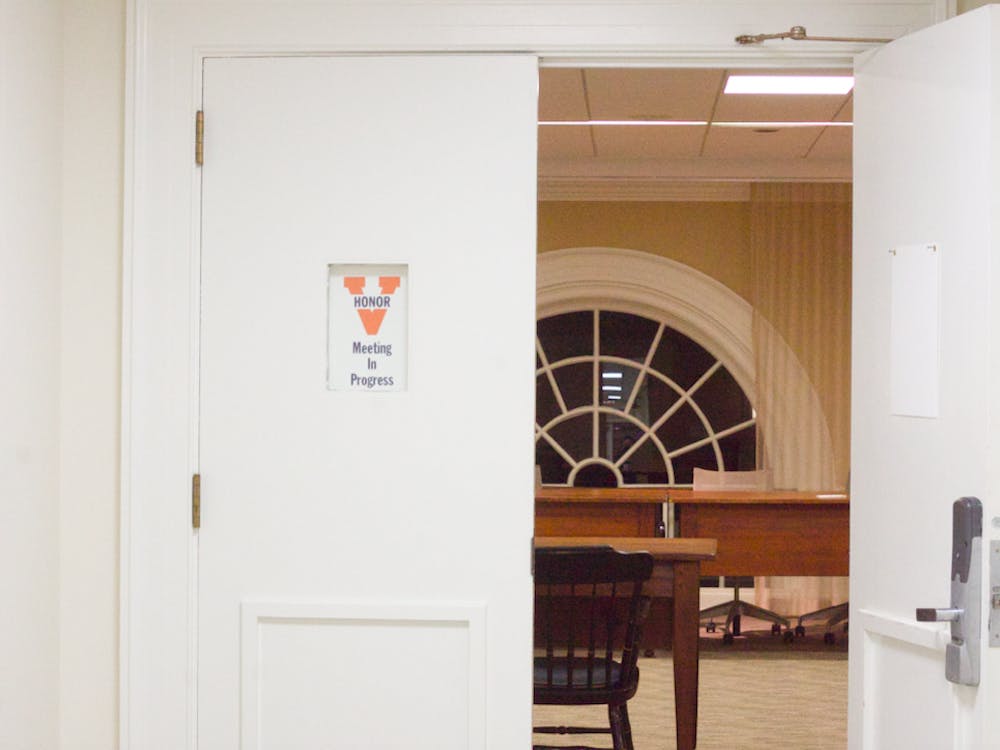As much as we like to view our time at the University as a mix of academic and social events, academics are the base from which we build the rest of our college lives. Sometimes this base begins to crack, either from procrastination or personal issues. In an attempt to push people back onto the straight and narrow path of scholarly excellence, the University can put them on academic probation. This is, in essence, a warning from the University to either shape up or risk expulsion. But the University has an exceedingly poor academic probation system. The University gives academic probation too readily and should adopt an academic warning classification in order to emphasize the goal of rehabilitation rather than punishment.
In the College and Curry School there are three ways one can get on academic probation: take fewer than 12 credits, earn less than a 1.8 GPA or have more than one grade below a C-. The Commerce and Architecture Schools have similar penalties, though a bit harsher. The Engineering School does academic probation slightly differently — students with under a 2.0 GPA or who fail a required course twice are placed on academic probation.
Compare this with how academic probation is handled at other Virginia schools. Virginia Tech imposes academic probation only when a student fails to achieve more than a 2.0 GPA. The same goes for James Madison University and George Mason University. Many of these schools also have another category between good standing and academic probation, called academic warning. VCU uses the same threshold of a 2.0 GPA to decide who gets put on academic warning, only putting students on academic probation after they fail to achieve greater than a 2.0 GPA for two successive semesters.
The University is clearly an outlier here. This would be fine if our system was more effective, but having multiple ways to qualify for academic probation actually creates problems. It can be unclear for students whether they are under the risk of academic probation until they are informed by the University. It is much easier when the threshold is a simple 2.0 GPA. Additionally, individual grades and credits are not very helpful as a bar for academic probation. A student taking 14 credits who needs to drop one class can find themselves on academic probation. The individual grade qualification is almost redundant with the GPA limit and only works to put down someone who is already struggling in their classes. Holding ourselves to a higher standard is a worthy goal, but we should not impose more stringent rules on ourselves without good reason. For academic probation, I fail to see the reason for our strict rules.
Adopting an academic warning classification similar to VCU’s would go a long way to improving the punitive academic establishment at the University. Under our current system students jump directly from good standing to academic probation. Does this truly encourage students to improve their performances in classes? An academic warning classification would give students ample time to improve their academic performance before facing significant consequences. There is a reason that many top Virginia schools use this system.
We very rarely talk about academic probation. Just looking at the electronic archives of The Cavalier Daily, there are no immediately visible articles that have been published on it in at least the last 10 years. We partly don’t talk about it because we see being put on academic probation as shameful. The University culture is steeped in competition and people are often afraid of being looked down upon if others find out they are on academic probation. This is why it is vitally important that academic probation rules be well formed — they have the potential to cripple an already struggling student. To this end, the University should simplify its academic probation rules and add the classification of academic warning.
Bobby Doyle is an Opinion columnist for The Cavalier Daily. He can be reached at b.doyle@cavalierdaily.com.





